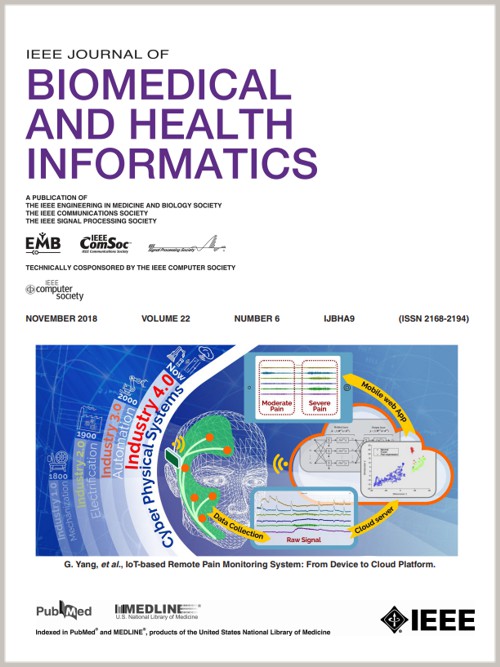特邀社论:健康信息学中值得信赖的机器学习
IF 6.7
2区 医学
Q1 COMPUTER SCIENCE, INFORMATION SYSTEMS
IEEE Journal of Biomedical and Health Informatics
Pub Date : 2024-11-06
DOI:10.1109/JBHI.2024.3472368
引用次数: 0
摘要
机器学习(ML)是当今人工智能的源头,在生物医学和健康信息学领域得到了长足发展。一方面,为了处理真实世界的数据,机器学习技术变得越来越复杂。另一方面,越来越多的用户也可以使用 ML。例如,自动化机器学习产品使用户无需编写代码就能建立自己的 ML 模型[1]。本文章由计算机程序翻译,如有差异,请以英文原文为准。
Guest Editorial: Trustworthy Machine Learning for Health Informatics
Machine learning (ML), the stem of today's artificial intelligence, has shown significant growth in the field of biomedical and health informatics. On the one hand, ML techniques are becoming more complex in order to deal with real-world data. On the other hand, ML is also more and more accessible to broader users. For example, automated machine learning products are enabling users to build their own ML models without writing code [1].
求助全文
通过发布文献求助,成功后即可免费获取论文全文。
去求助
来源期刊

IEEE Journal of Biomedical and Health Informatics
COMPUTER SCIENCE, INFORMATION SYSTEMS-COMPUTER SCIENCE, INTERDISCIPLINARY APPLICATIONS
CiteScore
13.60
自引率
6.50%
发文量
1151
期刊介绍:
IEEE Journal of Biomedical and Health Informatics publishes original papers presenting recent advances where information and communication technologies intersect with health, healthcare, life sciences, and biomedicine. Topics include acquisition, transmission, storage, retrieval, management, and analysis of biomedical and health information. The journal covers applications of information technologies in healthcare, patient monitoring, preventive care, early disease diagnosis, therapy discovery, and personalized treatment protocols. It explores electronic medical and health records, clinical information systems, decision support systems, medical and biological imaging informatics, wearable systems, body area/sensor networks, and more. Integration-related topics like interoperability, evidence-based medicine, and secure patient data are also addressed.
 求助内容:
求助内容: 应助结果提醒方式:
应助结果提醒方式:


